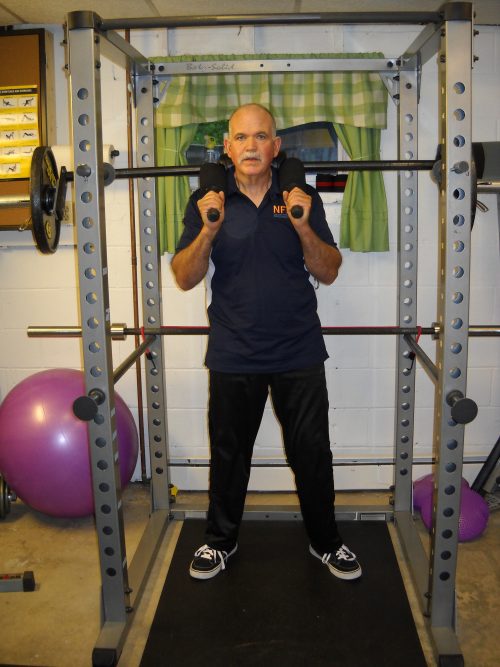
The safety squat bar is a safer alternative to using a straight bar squats for personal training clients. Firstly, the weight is cambered forward which helps the lifter to stay in a more upright position during a squat. There are handles that are placed in front of the lifter. This allows a person to more easily hold the bar in position without placing stress on the shoulders. The bar itself sits around the user’s neck and has much more surface area to spread the weight on the trapezius muscles. The bar is also nicely padded for user comfort.
Many people who have shoulder issues cannot squat using a straight bar because they can’t get their hands on the bar without hurting their shoulders. The handles on the safety squat bar allow a lifter with shoulder issues to perform barbell squats.
Safety Squat Technique
- With feet shoulder-width apart, back flat, core engaged, and knees bent, place the bar onto your shoulders while it is in the racked position. You should always rack the bar slightly lower than shoulder-height.
- Grab the handles and straighten your knees to un-rack the weight.
- Take a step back with one foot and then the other, and stand with your feet shoulder-width apart.
- With your spine in a neutral position and your core braced, send the hips backward, the bending at the knees as if you were sitting on a bench.
- Eyes should be cast forward, not upward or downward during the exercise.
- Descend into the squat in a controlled manner until you reach a challenging depth that your mobility will allow, then drive the weight back up pushing through your heels.
- As you come up you should uncoil your body with your hips and knees both reaching a straightened position at the same time.
Common Mistake
People often pull downward on the handles. If you do that it will place a great deal of stress on your neck. The bar should be balanced on your shoulders and your hands are only there for safety.
I find this exercise to be a great step up from using a leg press machine but yet there is still guidance and you retain the ability to add a decent amount of weight if desired.






